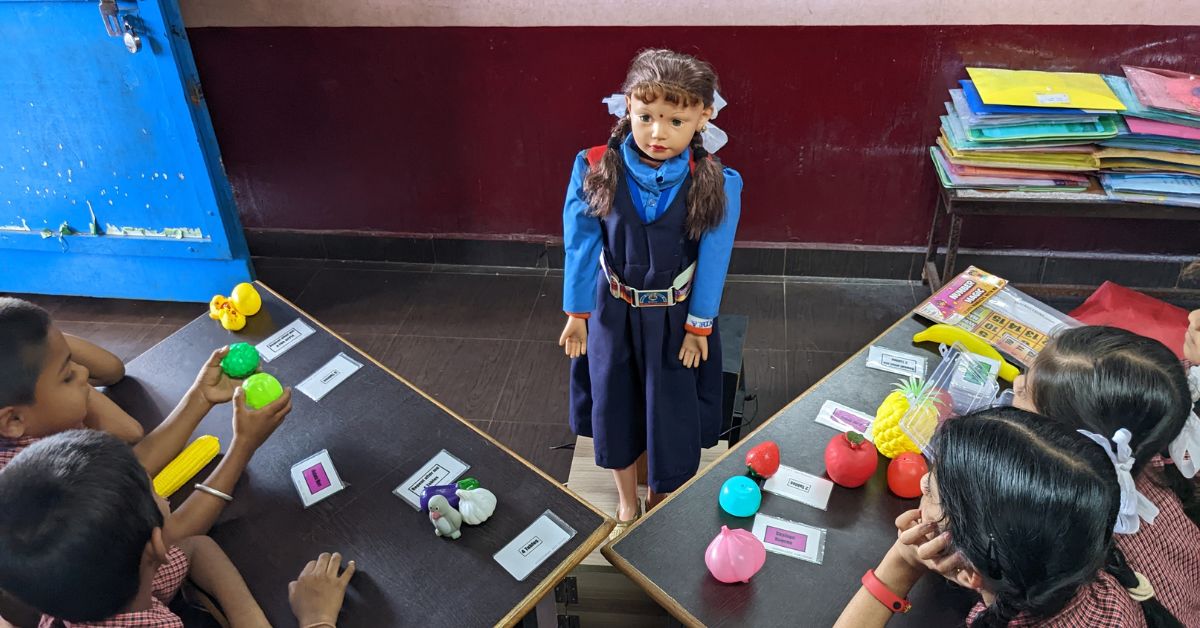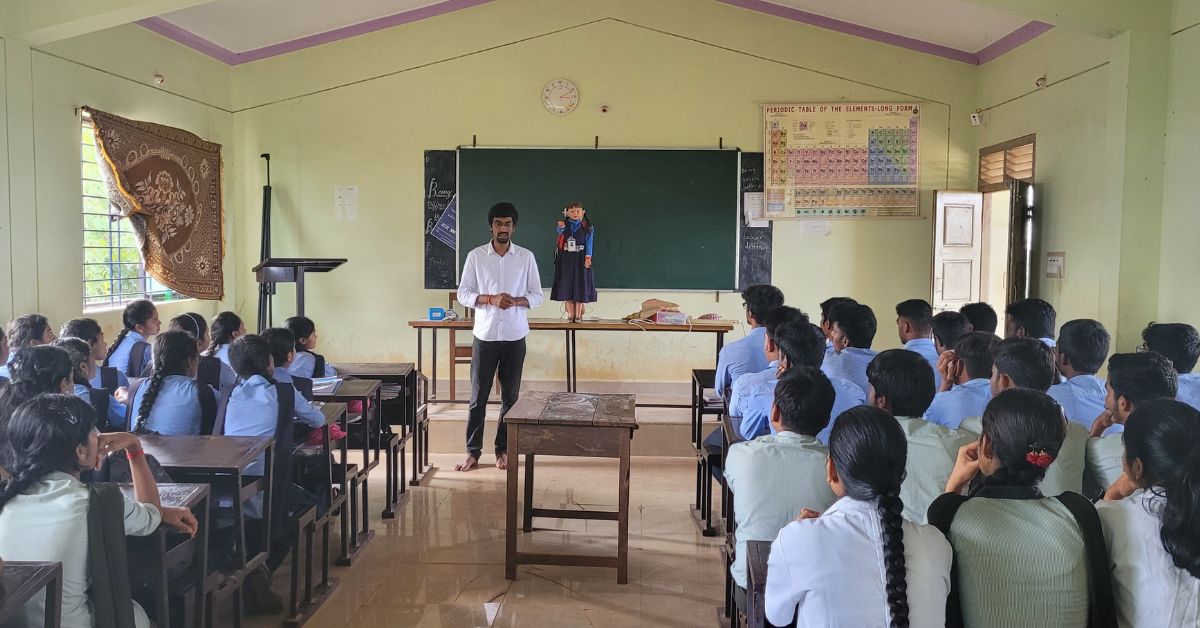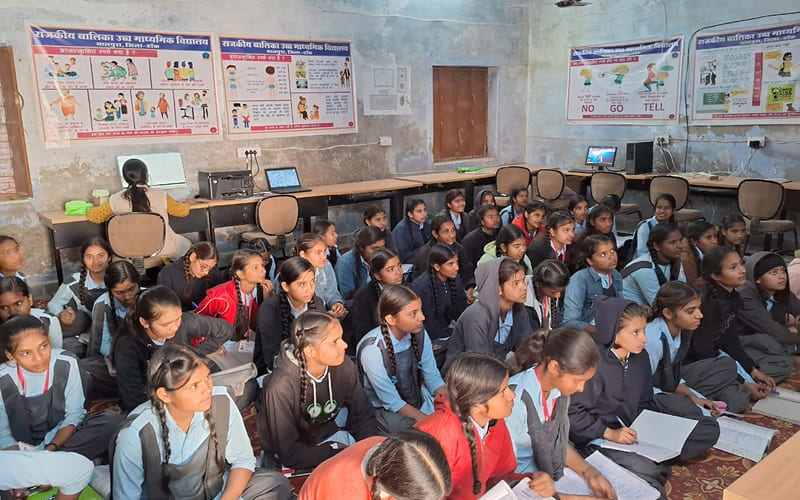
Teaching with a Heart of Code: How a Humanoid Robot is Powering Rural Classrooms in Karnataka
In Sirsi, Karnataka, physics professor Akshay Mashelkar has developed ‘Shiksha’—a humanoid robot that teaches students in rural schools using interactive lessons and local languages. Built with minimal funding and immense ingenuity, the robot is now used in over 25 schools, helping bridge educational gaps and making learning more engaging for young children in underserved areas.
Updated on: 04 August 2025

Sector

Solution
Technology

State of Origin
Impact Metrics
25+ schools
across Karnataka are using the Shiksha robot.
Improved engagement
and supports individualised student attention.
Enhances learning
with fun and interactive element, relieving teachers' instructional load.
In many Indian villages, digital learning remains out of reach. Chalkboards and handmade visuals are still the norm, and overstretched teachers juggle multiple roles. It was against this backdrop that Akshay Mashelkar decided to act—not by waiting for top-down reform, but by building something himself.
Inspired by the idea of bringing innovation into rural classrooms, he designed Shiksha: an interactive, humanoid teaching assistant that could support learning even where resources were scarce. His goal was simple but powerful: make lessons more exciting, consistent, and accessible.
Meet Shiksha

Constructed over 1.5 years with an investment of just ₹2 lakh, Shiksha is no ordinary machine. It responds to programmed cards that trigger subject-specific lessons in Kannada, English, and Mathematics. With one card to activate it and others to initiate individual lessons, the robot engages students through recitations, questions, poems, and educational trivia.
Shiksha doesn’t just deliver information—it interacts. The experience it creates is immersive, fun, and relatable, turning classrooms into spaces of active participation rather than passive instruction.
A growing presence across rural schools
Today, Shiksha is operational in more than 25 schools across the Uttar Kannada district. Schools such as KHB School and Urdu School in Sirsi have reported visibly improved classroom engagement. Teachers note that students are more attentive and excited about learning when the robot leads the session.
The robot also relieves teachers of some instructional load, allowing them to focus on individualized support. For schools with limited staff and growing student needs, this dual benefit has been transformative.
A blueprint for grassroots ed-tech

What sets Shiksha apart isn’t just its affordability or clever engineering—it’s its replicability. Designed using locally sourced components and adaptable content formats, Shiksha offers a model that could scale across rural India, especially in primary classrooms where foundational learning needs the most attention.
Under the National Education Policy (NEP) 2020, there is a strong emphasis on foundational learning, multilingual instruction, and the integration of technology in classrooms—especially at the primary level. Additionally, Shiksha complements the aims of the Samagra Shiksha Abhiyan, which promotes equitable access to quality education in rural and remote regions. As India scales its Digital India mission and initiatives like PM eVidya and DIKSHA, grassroots solutions like Shiksha can play a vital role in extending the reach of technology-enabled education to the country’s last-mile learners.
Humanizing tech for the youngest learners
Shiksha represents the best of what grassroots innovation can achieve—practical, affordable, and transformative. In a country striving to make education inclusive and future-ready, this humble humanoid stands as a testament to what’s possible when educators become inventors.
It reminds us that technology in education doesn’t need to be high-cost to be high-impact. Sometimes, all it takes is one committed teacher and a little ingenuity to reimagine how learning reaches every child.
Share Your Story Today, Shape Viksit Bharat Tomorrow
Got an idea, innovation, or experience that's making a difference? Share your story now and ignite India's transformation because your voice can drive the future forward!
BUILD YOUR OWN
BUILD YOUR OWN
How can I implement this innovation effectively?
How is this innovation being adopted around the world?
Where else could this innovation make an impact?
Who has seen real results from using this innovation?
What insights do experts share about this innovation?
What policies support or influence this innovation?
How could this innovation evolve in the future?
Is this innovation accessible and inclusive for everyone?
How can I contribute to or participate in this innovation?
What resources can help me explore this innovation further?
If you would like to know more about this innovation, fill this form to contact the innovator.
Handpicked stories tailored just for you
Explore stories that inspire, inform, and ignite new ideas across tech, innovation, and real-world impact


Tele-ICU Technology Revolutionizes Critical Care Access Across India
Bengaluru-based Cloudphysician is transforming ICU care with its Tele-ICU platform, connecting hospitals to remote intensive care experts 24/7. Co-founded by...
Read More

